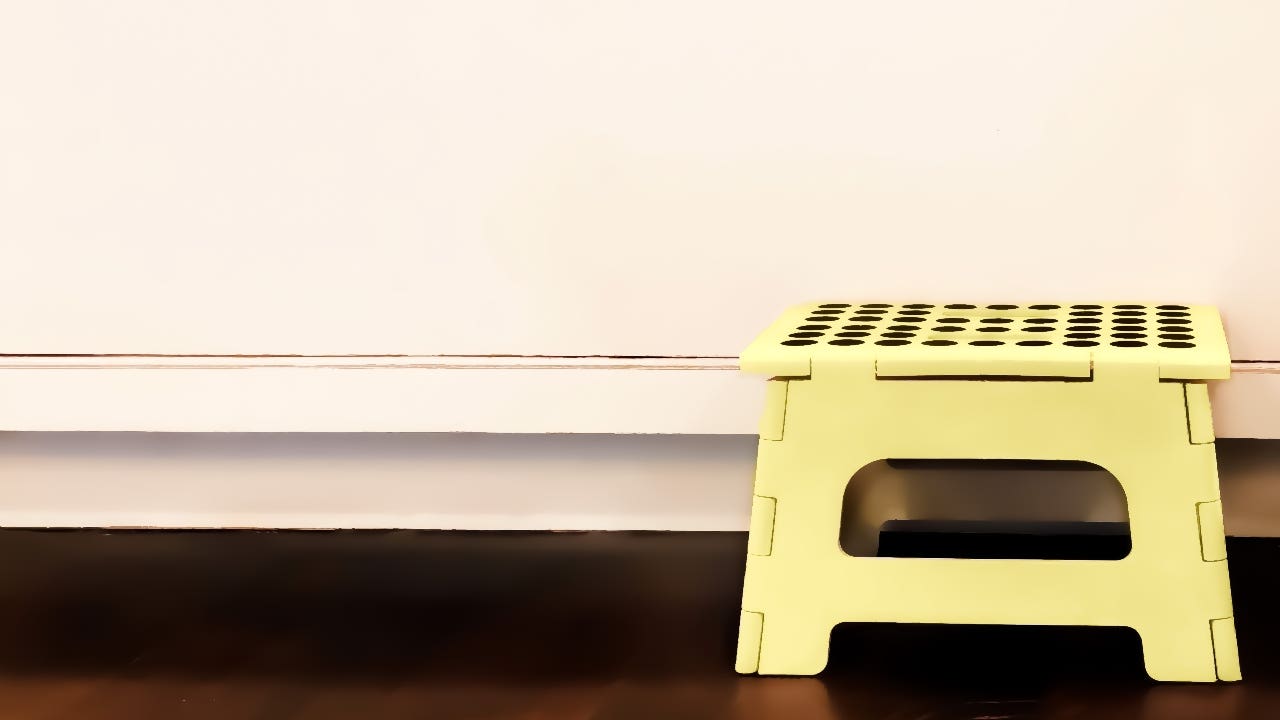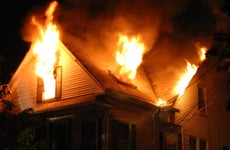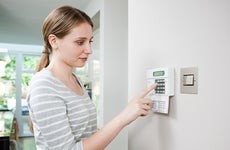How to childproof your home, room by room

The Bankrate promise
At Bankrate we strive to help you make smarter financial decisions. While we adhere to strict , this post may contain references to products from our partners. Here's an explanation for .
Accidents happen in a home with children, and sadly, sometimes, they can be deadly. A good way to avoid the most tragic accidents is to have a childproofing plan. There are practically endless options to accomplish this — here are some of the most effective (and affordable) safety solutions and tips.
Kitchen
Kitchens are full of hazards posing as temptations to curious young minds — pots, pans, appliances, cleaners, knives, and other potential mishaps lurk everywhere. The quickest solution is to install a baby gate to eliminate kitchen access, but that might be challenging (or impossible) in a home with an open floor plan. Here are a few other simple but effective steps you can take to help prevent kitchen-related injuries:
- Lock all cabinets, but especially lower cabinets. The safest option is to keep all hazardous products, like cleaners, in upper cabinets that your child can’t access, but if there are hazards stored in lower cabinets, install childproof cabinet latches. These come in various shapes, sizes, and colors. If you don’t want to modify the look of your cabinets, you might also try magnetic locks.
- Put a lock on the refrigerator. For hungry toddlers, there might be food in your refrigerator that poses a choking hazard, like grapes or cheese, or breakable items like glass bottles. Installing a childproof latch will keep your child out of the refrigerator.
- Lock or latch your oven door. If your oven doesn’t have a lock feature, install a latch that allows you to lock it when not in use. Otherwise, your child might be able to open the oven door when it’s hot or place flammable items inside the oven that you’re not aware of when you turn it on.
- Be extra cautious with stovetops. Can your little one reach the burner knobs or the burners themselves? Install a stove guard that keeps hands away from hot burners. If you can’t remove your stove knobs, keep a close eye on knob settings to avoid fires.
- Keep small appliances out of reach. It’s easy to overlook the toaster oven or air fryer sitting on the countertop if you’re an adult. Children like to reach for things, and one swift pull of a small appliance could spell trouble. Keep small appliances put away, when possible, or pushed to the back of the countertops with no reachable cords. If you keep a stool out for your toddler to “help” in the kitchen, make sure that the stool isn’t accessible when you don’t want it to be.
- Make sure all cutlery is inaccessible. Simply put, keep all cutlery put away in an upper cabinet that’s completely inaccessible to your child.
Living room
The biggest injury culprits in living rooms are electrical outlets, TV stands, and small odds and ends that seem harmless. Here are some childproofing tips:
- Cover electrical outlets. This applies to all areas of the home: Any electrical outlets within reach must be covered. Don’t forget your power strips — there are covers for those, too.
- Mount TV. Depending on the style of your TV stand, it might be a bit top-heavy once the TV is on top of it. Even if it’s not, don’t be surprised to find your kiddo climbing the TV stand, which puts them at risk of a falling television. Consider mounting TVs to walls so they’re out of reach.
- Consider your odds and ends. These might include candles, lighters, wax burners, photo frames, or breakable coasters. Anything in your child’s reach that could potentially cause them harm should be removed.
Bedroom
When it comes to your child’s room, there are many retailers that offer safe baby furniture. Let’s talk about the standard bedroom and what you can do to keep it secure:
- Fit window locks or guards. To prevent falls, it’s important to keep all windows locked — assuming the locks are outside your child’s reach. If that isn’t an option in your home, look into window guards that keep children from falling out of a window, and window stops that eliminate the window from opening more than a few inches.
- Install cordless window blinds. Maybe you’re a curtain-only type of homeowner. If not, make sure your window blinds are cordless. The dangling cords can be a tempting “necklace” that can lead to strangulation.
- Keep furniture away from windows. When it comes to small children, it goes without saying that if the child can climb it, they will. Keep furniture away from windows to avoid falls.
- Secure furniture. Make sure any furniture that could tip over if pulled is secured to a wall or anchored to the floor.
Bathroom
Bathrooms can be fun for experimental toddlers, but they also pose dangers. Here are ways to minimize risk:
- Check hot water temperature settings. Child hot water burns lead to 300 ER trips in the U.S. daily, according to St. Louis Children’s Hospital. Make sure your water heater temperature setting is not above 125 degrees Fahrenheit.
- Avoid trash can liners. Yes, throwing waste in a basket without a liner seems, well, unsanitary. However, this is a much better option than a plastic liner, which can quickly suffocate an unattended child.
- Install a toilet lid latch. Who wants to stick their head in a toilet? Your kid. If your little one can raise the toilet lid, they might try to stick their head in the bowl and get stuck. Installing a childproof toilet lid latch can help prevent this from happening.
- Make sure toiletries and electrical equipment are stowed away. Hairdryers, electric shavers, or any other items that pose an electrocution hazard must be safely stored. Small items that your child could choke on, like nail clippers, contact lens cases and various makeup products, must also be put away. Keep these items in a cabinet with a childproof latch.
Laundry room
Laundry rooms can seem harmless, but are they? In addition to the washers and dryer, most laundry rooms have soaps and detergents, fabric softeners, and various other harmful products if ingested. So:
- Lock washers and dryers. Ensure all front-load laundry equipment can be locked, and keep it locked at all times when not in use. If you have a top-load machine, remove tempting climbing options that allow a child to get inside.
- Lock cabinets. Put locks on all cabinets, especially low, easy-to-access ones that contain hazardous products.
Childproofing products
To sum up, here’s a go-to shopping list of childproofing products:
- Baby gates for off-limits rooms or stairwells
- Outlet and power strip covers
- Cabinet and drawer latches
- Refrigerator latch
- Oven door latch
- Stovetop guard
- Furniture anchors
- Wall mounts for TVs
- Bumpers for sharp table or fireplace edges
- Window guards or stops
Underestimating your child’s ability to harm themselves at home can have devastating consequences. A parenting reality is that no matter how close of a watchful eye you keep, there will undoubtedly be times your child is left unattended. For those moments, proper childproofing is vital.
Related Articles



Protecting your home from fires: safety tips for each room in the house
